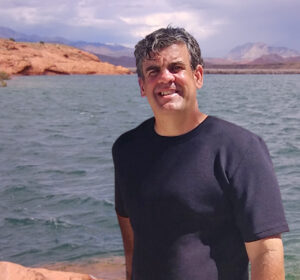One of the key elements to growing and developing as a person is finding frameworks and models that systematically help you move through life. Blueprints, business plans, and compasses are examples of instruments that provide us with instructions and directions needed to achieve our goals.
I’ve learned about a variety of different models that relate to coaching during my training at the Coaching Academy in London over the past few years. Attending workshops, reading coaching books, and listening to podcasts have also helped me learn about different models.
Today, I want to focus on a model that I discovered early in 2019. I stumbled on the model by reading the blog of an amazing life and business coach that I’d been following by the name of Natalie Bacon. You can find Natalie by visiting nataliebacon.com. She is an amazing coach! Natalie produces such empowering content, and I love how transparent she is when sharing about her personal journey. One day I happened to be reading a post by Natalie where she listed her favorite podcasts. I was actually already listening to some of the podcasts that she mentioned in her post, but there was one listing that caught my attention. That podcast is called “The Life Coach School Podcast” by Brooke Castillo, and it has changed my life immensely.
Outside of Tony Robbins, Brooke Castillo is the most knowledgeable, insightful, and brilliant coach that I’ve ever listened to. She has a way of teaching and wrapping words around everyday challenges that I’ve simply never experienced before. The biggest gift that I’ve been given from listening to Brooke is her coaching model. Here are the components of this life-changing model:
Circumstances
These are the things that happen in the world that we can’t control. This includes our past, what is going on in the world, and the fact of our lives. Circumstances are neutral until we have a thought about them.
Thoughts
These are the sentences that go through our minds.
Feelings
These are generally one-word descriptors that describe how you are feeling at this moment, such as happy, sad, anxious, etc.
Actions
This component is driven by our feelings.
Results
What you do or don’t do is going to create a certain result.
So here’s how it all comes together:
Circumstances are facts.
Thoughts are sentences in our head that create a feeling.
The feeling is always going to create an action, an inaction, or a reaction.
That action will create a result, or the outcome we get.
To put this model into practice, think about something that is happening to you right now and classify it as either a circumstance, thought, feeling, action, or a result. I will utilize a common scenario that shows how it fits into the model. An individual considers the circumstance (fact) that he/she has purchased and tried 5 different diet plans without completing any of them. The resulting thought is that he/she thinks that diets are impossible to stick to and none of them work. This thought leads to feeling frustrated and like a failure. He/she resorts to inaction and gives up on the idea of ever dieting again, and decides to stop exercising too. The end result is that the individual actually gains more weight and drifts even farther away from a very important goal.
Virtually anything you can imagine can be categorized into the model. Another important aspect of the model is learning to understand how impactful the brain can be in terms of how we are getting along in life. It’s important to be aware of our brain and not allow it to function on default or autopilot. This is often an uncomfortable realization because our brains can be stubborn. Our brains like to be efficient and right. When we challenge our brains, it can create lots of discomfort and cognitive dissonance. This means that our beliefs are being challenged because they are no longer matching up with the reality that we’re experiencing. We can retrain our brains, but it is a process that takes time and effort. I will talk more about the various components of the model in future episodes. To listen to Brooke Castillo’s podcast and better understand how she utilizes the model in her coaching practice, go to thelifecoachschool.com.

M
MINDSET
Teach your mind to notice there are breadcrumbs left along the path to success. Proven frameworks, systems, and models are the lifeblood of high performance.
A
APPLICATION
What systems have worked or not worked for you in the past? What can be learned from these prior experiences?
P
PRODUCTION
Research a system that has shown consistent results and ensure that it is in alignment with your values, beliefs, budget, etc… Invest in this framework or “how to system” and implement the tactics to accelerate your growth.






0 Comments